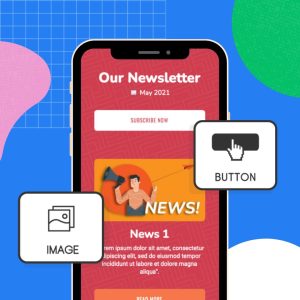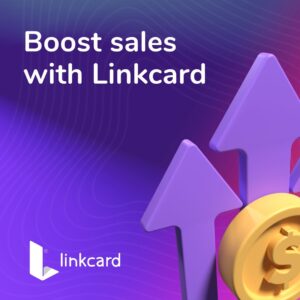How to Define and Use Reward Levels in Your Loyalty Program


How to Define and Use Reward Levels in Your Loyalty Program
How to Define and Use Reward Levels in Your Loyalty Program
Nowadays, having a digital loyalty program has become a key strategy to retain customers and maximize the value of each transaction. Through reward levels (also called “tiers”), businesses can offer differentiated benefits to encourage greater participation and loyalty. In this article, you will learn what reward levels are, how to define and use reward levels in your Loyalty Program, and practical examples for various industries such as coffee shops, restaurants, clothing stores, and retail businesses.

What Are Reward Levels?
Reward levels are categories or tiers that segment your customers based on their activity or spending within your loyalty program. Each level grants specific benefits or promotions, motivating users to purchase more frequently or reach goals to unlock new advantages.
- Common names: Bronze, Silver, Gold, Platinum, VIP, Elite, etc.
- Potential benefits: Exclusive discounts, free shipping, gift products, early access to launches, VIP experiences, and more.
This gamified structure allows customers to easily understand what benefits they have now and what they can earn by leveling up, increasing their engagement with the brand.
How to Define Your Own Reward Levels
To create effective levels, they must reflect both your business needs and customer expectations. Here are some key steps:
1.Analyze Your Customers’ Behavior:
Review your sales history and purchase frequency. Identify patterns: How many visits or purchases does an average customer make? How much do they spend per month?
2. Set Clear Goals for Each Level
Define the metrics used to “level up”:
- Accumulated points: Earned for each purchase or interaction.
- Amount spent: Total spent over a certain period.
- Visit frequency: Number of monthly or quarterly visits.
3. Ensure That Levels Are Neither Too Easy Nor Too Difficult
- Too easy: Everyone reaches the top level effortlessly, devaluing the program.
- Too difficult: No one reaches higher levels, causing frustration and dropouts.
Adjust the goals to make them challenging yet achievable for the average customer.
4. Assign Proportional Benefits to Each Level
The reward should align with the effort required to reach it. A Gold-level customer who has invested time and money to get there will expect more attractive rewards than an entry-level participant.
5. Review Periodically
A loyalty program is not static. Analyze results, gather feedback, and adjust levels or benefits based on what customers truly value.
Give Welcome Bonus Points
An effective recommendation is to offer bonus points or an immediate benefit when a customer signs up for the loyalty program. This achieves:
- Early motivation: The user sees value from the start and becomes familiar with the system.
- Quick engagement: Seeing that they can redeem an initial benefit (even a small one) increases the likelihood of continued participation.
- Lower entry barriers: Feeling rewarded immediately reinforces confidence and satisfaction with the program.
For example, if your program grants 1 point per $1 spent, you could offer 10 welcome points for signing up. This allows new customers to experience the redemption process and progress toward the next levels.
Recommendations for Effectively Using Reward Levels
- Clear Communication: Ensure that customers understand how many points they need to level up or what the spending requirements are.
- Transparency: Display real-time data (e.g., in your app or website) on accumulated points, purchases, or visits.
- Gamification: Use progress bars, badges, and notifications to keep motivation high.
- Smart Segmentation: Adjust communication and promotions based on customer level. For example, a VIP member can receive more exclusive and personalized offers.
- Regular Updates: Add seasonal benefits, special discounts for holidays, or limited-time products to maintain interest.
Examples of Levels and Benefits in Different Industries

Here are specific ideas for various business types:
5.1 Coffee Shop
- Level 1 (Welcome / Bronze): Buy 5 coffees, get 1 free. Bonus points for signing up.
- Level 2 (Silver): 10% discount on any pastry + monthly promotions on new drinks.
- Level 3 (Gold): Free coffee on your birthday + early access to seasonal flavors.
- Level 4 (VIP): Exclusive coffee tasting events + delivery of premium coffee bean samples.
5.2 Restaurant
- Level 1 (Starter): 5 bonus points upon registration. Earn 1 point per visit. Quick accumulation for a free appetizer.
- Level 2 (Frequent Diner): Tasting of new dishes when the menu changes and special wine discounts.
- Level 3 (Gourmet): Invitations to themed dinners with guest chefs, priority seating reservations, free dessert offers.
- Level 4 (Elite): Access to private dining rooms for small events + personalized wine pairing experiences.
5.3 Clothing and Apparel Store
- Level 1 (Starter): Initial point bonus and 5% off the first purchase.
- Level 2 (Fashionista): Early access to sales, free in-store styling consultations.
- Level 3 (Trendsetter): Free shipping on all online purchases, exclusive fashion events.
- Level 4 (Icon): Personalized stylist services, ongoing VIP discounts, invitations to fashion shows and launches.
5.4 Bar
- Level 1 (Newbie): Discount on your first drink, bonus points for signing up.
- Level 2 (Regular): One free drink after a certain number of visits, extended Happy Hour discounts.
- Level 3 (Premium): Invitations to themed parties, priority access to limited-seat events.
- Level 4 (Master Brewer / VIP Sommelier): Private tastings of new craft beers or select wines, meet-and-greet with suppliers.
5.5 Retail Store (General)
- Level 1 (Basic): Welcome bonus and reduced shipping on online purchases.
- Level 2 (Preferred): Free returns and discounts on selected products.
- Level 3 (Gold): Participation in product trials, early access to private sales.
- Level 4 (Platinum): Priority customer service, personalized offers, and point redemption for gift cards.
Conclusion
Incorporating reward levels into your digital loyalty program is an excellent way to motivate and reward customers while increasing their purchase frequency and volume. Remember:
- Design levels that align with customer behavior.
- Offer bonus points or initial benefits to encourage new members to try the system.
- Adjust the progression difficulty so customers feel motivated but not overwhelmed.
- Communicate clearly and transparently about each level’s benefits and how to reach them.
With a well-designed strategy, you will see how your customers become more engaged with your business, leading to better retention and an increase in average transaction value.
Want to implement a digital loyalty program with effective reward levels?
Contact us to discover how to create a personalized strategy, optimize your reward structure, and strengthen customer loyalty. Make your brand stand out in an increasingly competitive market!




















